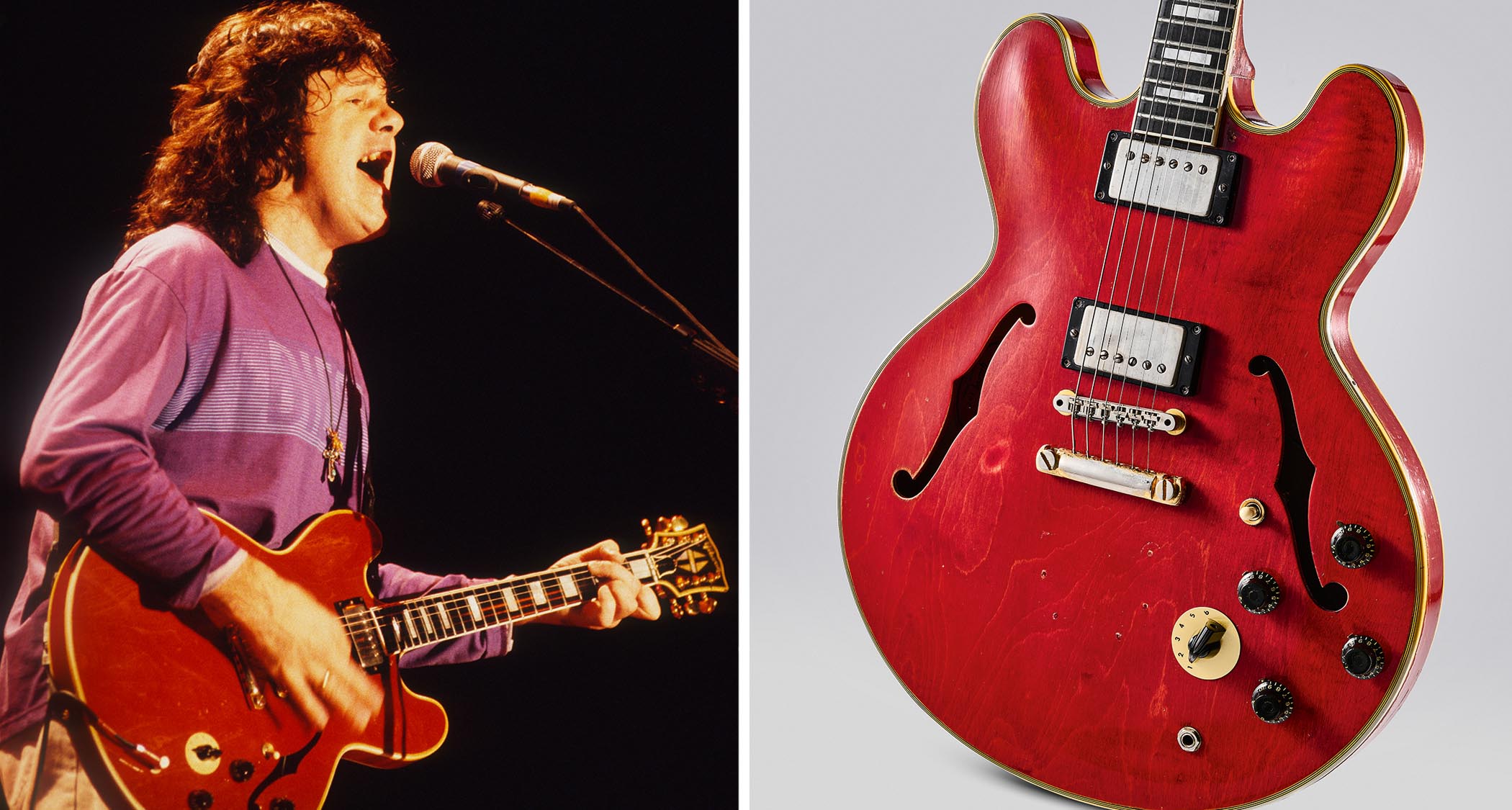“The quality of guitars didn’t plummet overnight – some might argue that it remained high for at least a decade”: Fender CBS guitars get a bad rep – but what actually changed?
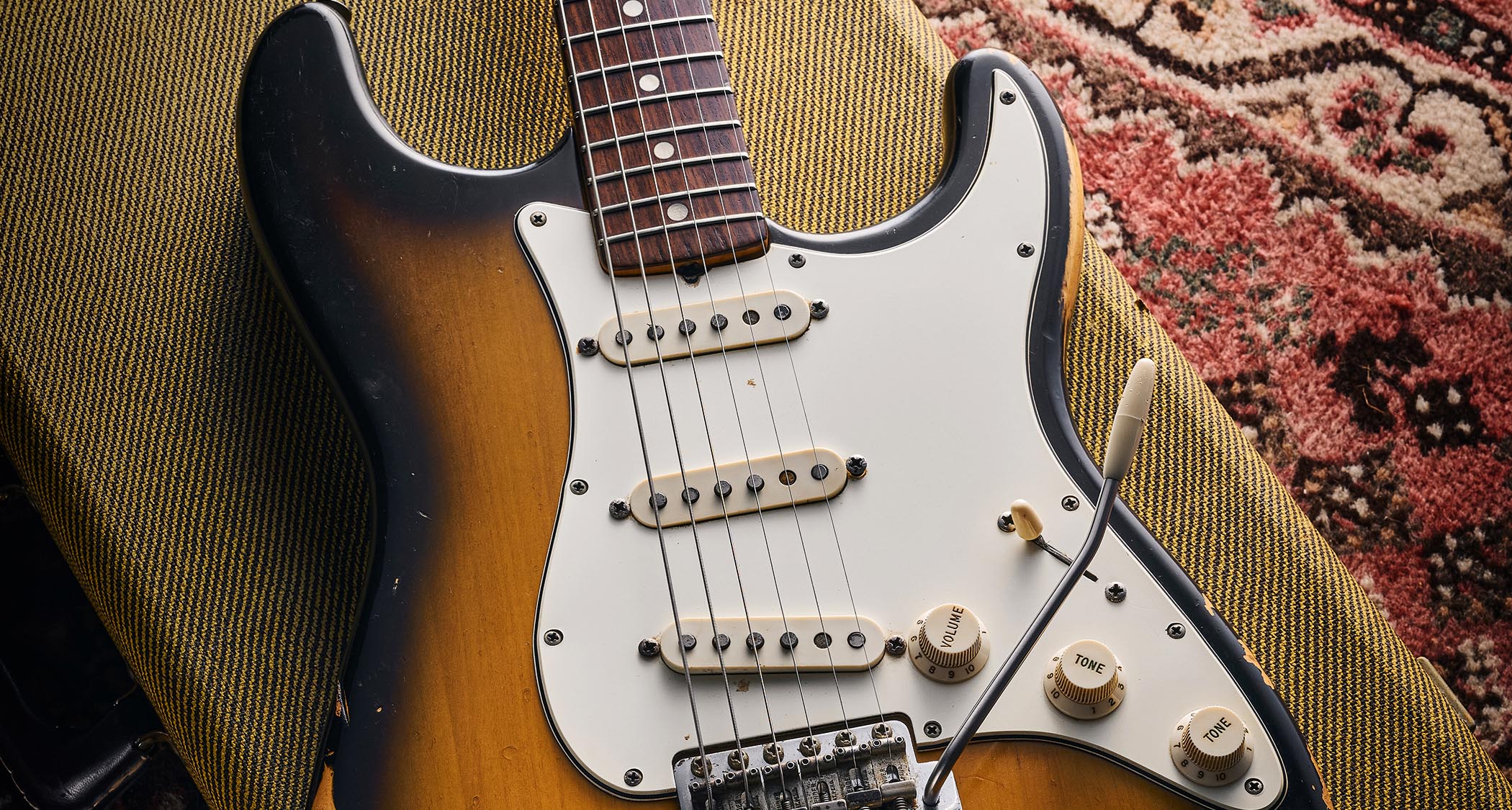
CBS bought Fender because it saw the potential for a bigger market share and greater profitability in an era when guitars dominated popular music. Achieving those goals meant that CBS needed to increase production, streamline processes and lower costs – and that’s what lay behind many of the changes that occurred post-1965.
Vintage Fender folklore might lead you to conclude that the CBS takeover was the lutherie equivalent of the Khmer Rouge’s ‘Year Zero’, but nothing could be further from the truth. The quality of Fender guitars didn’t plummet overnight, and arguably remained high for at least a decade.
Changes were made, but for the most part they were gradual and more cosmetic than sonic. Let’s break things down and take a forensic look at the alterations CBS made to Fender’s iconic models between 1965 and 1970, and the impact they had on the way the guitars looked and sounded.
Necks
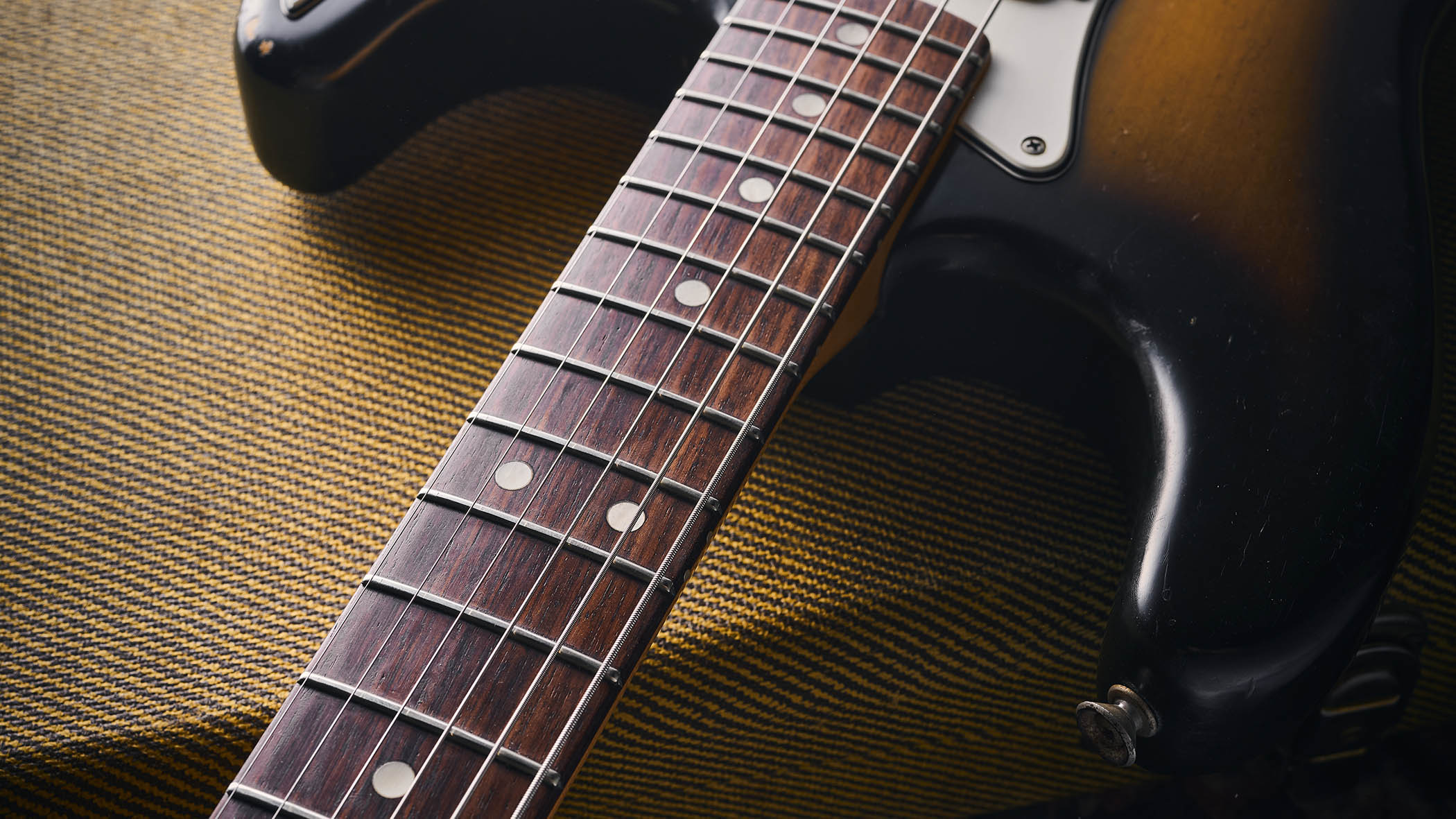
In the immediate aftermath of CBS’s takeover, Strat and Tele necks remained much the same. Fender had already been producing these models in significant numbers, so it would have been madness not to use up the remaining stock of unused necks, rather than discard them for the sake of imposing a new brand image.
Construction methods continued as before, although Fender began using pao ferro and Indian rosewood instead of expensive and increasingly scarce Brazilian rosewood.
Fender persisted with the ‘veneer’ method of applying rosewood and maple fretboards well beyond the 1960s, and after numerous refrets most veneer-’board vintage Strats now have 22 individual pieces of veneer. So while pao ferro and Indian rosewood fretboards may appear lighter, they’re unlikely to sound any different from the darker Brazilian ones.
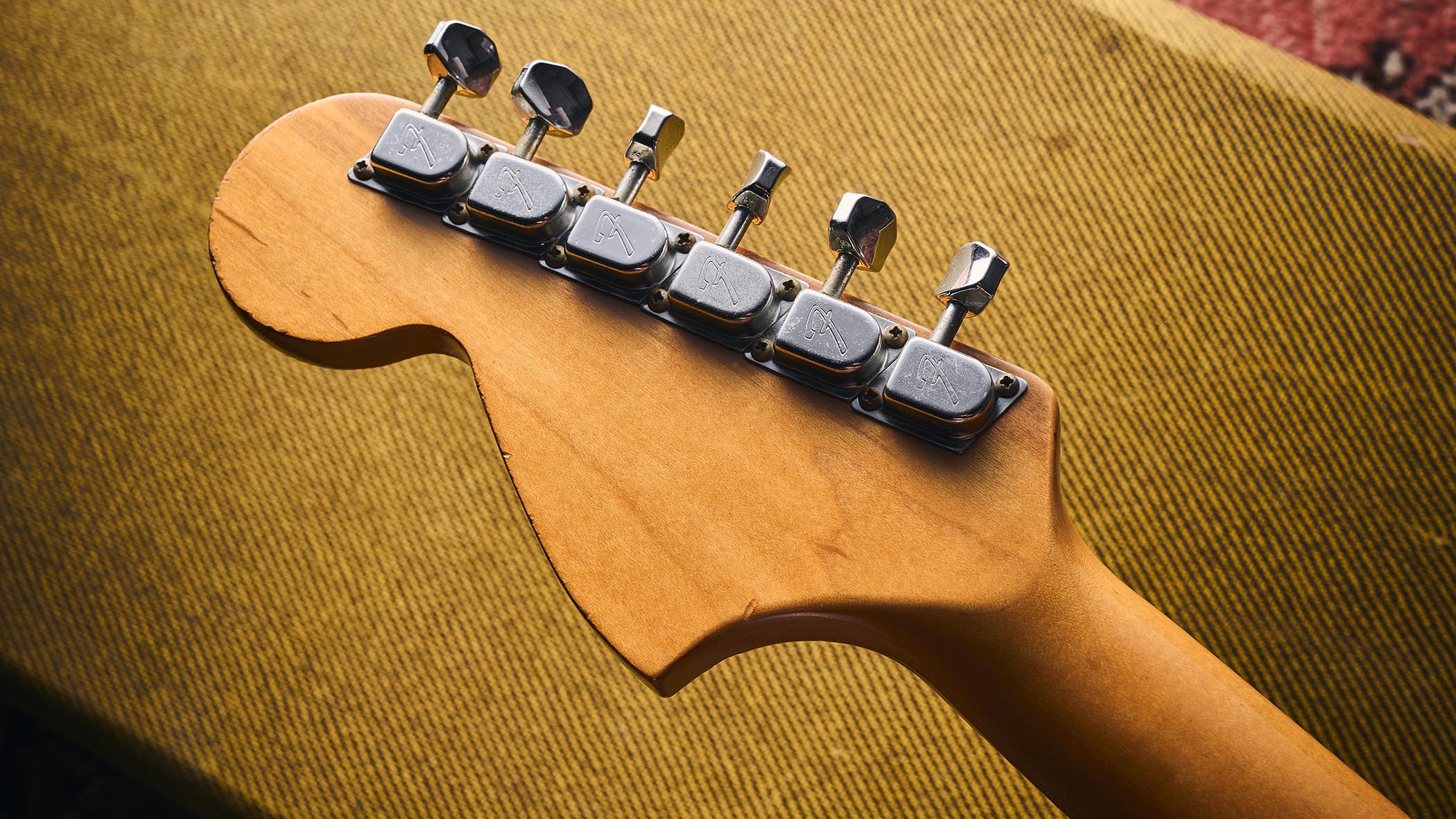
One early change that CBS made was, in practical terms, an improvement. The ‘clay’ fretboard and side marker dots used prior to CBS’s ownership tended to darken up, which made them hard to see. CBS began installing celluloid dots, which were more durable and provided greater visibility, and narrowed the dot spacing at the 12th fret. The offset models were treated to an upgrade in 1965 with the introduction of fretboard binding, and the following year celluloid blocks replaced the dots.
All the latest guitar news, interviews, lessons, reviews, deals and more, direct to your inbox!
It’s widely supposed that Fender introduced bigger headstock logos to increase brand visibility on television. Tele and Strat ‘spaghetti’ logos lasted until late 1964, when new ‘transitional’ logos were introduced. This was retained for the larger Strat headstock of 1966 and lasted until mid-1967, when a black logo with bigger lettering was adopted.
At the same time, Fender experienced incompatibility issues with water-slide decals after switching to quick-drying and non-yellowing polyester finishes in 1968. The solution was to spray headstock fronts with nitrocellulose, which explains why big headstock faces generally look darker than the rest of the neck. In 1969 Fender also began spraying lacquer over the decals to protect them and achieve a smooth and glossy look.
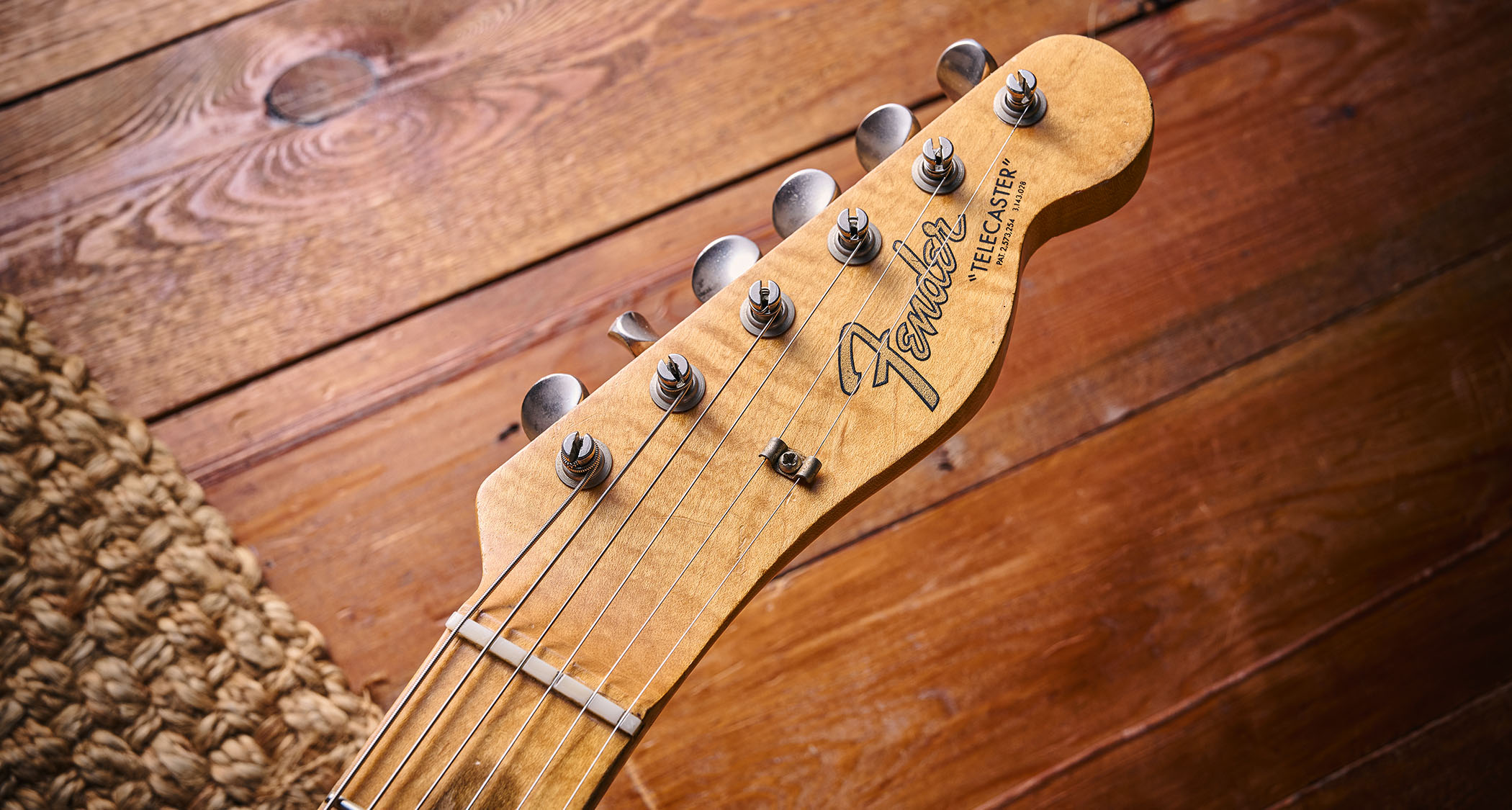
Also in 1969, Fender reverted to the original one-piece neck construction method with the truss rod inserted from the back of the neck. These necks are easy to spot because there will be a skunk stripe on the back and a walnut plug on the front of the headstock. Maple- and rosewood-’board Teles were made this way, as were maple-’board Strat necks (but not the rosewood ones).
Across all models, the company’s neck attachment method remained unchanged. Fender’s four screws and a plate arrangement, which was first seen on Broadcasters, would last until midway through 1971.
Bodies
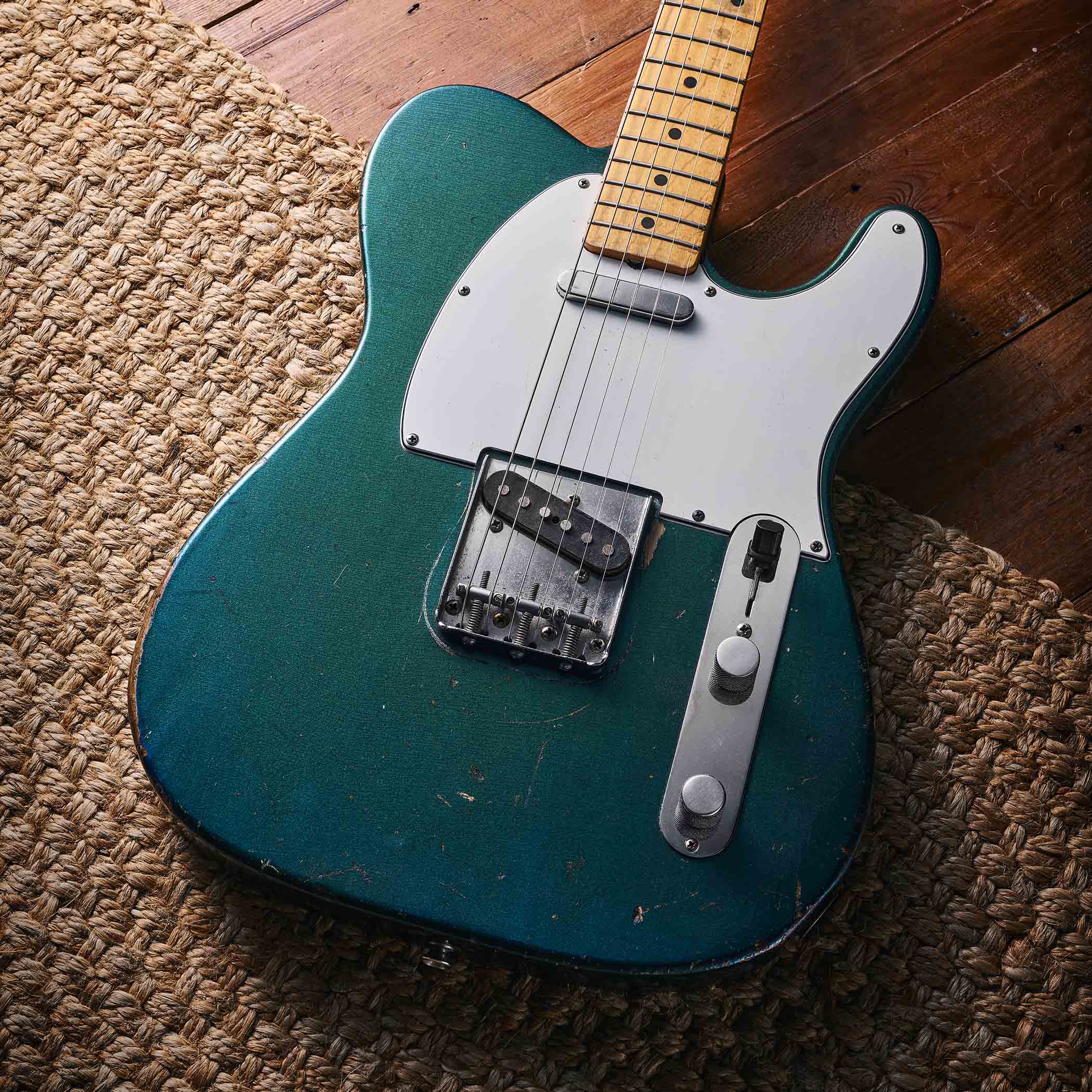
Most bodies remained largely unaltered throughout the 1960s. The CBS era is often wrongly associated with heavier bodies, but weight always varied considerably. Some early Blackguards are like boat anchors, and absurdly heavy Strats didn’t become commonplace until the 1970s.
Alder had been the standard body wood for Strats since 1956, but ash still featured on many Telecasters. Fender must have had concerns about the weight of the ash it was sourcing because in 1967 its teams began routing weight-relieving cavities under the pickguard.
Touring musicians must have twigged that these cavities provided a convenient way to conceal contraband, and they’re still known as ‘smuggler’s Teles’. It is also thought that Thinline Teles were designed to work around the heavy ash issue.
Most dual-pickup versions of the guitar that became known as the Telecaster had a straight diagonal channel cut into the top of the body. One hole was drilled into the channel from the neck pickup cavity and a second from the channel into the control cavity to pass the neck pickup’s wires through to the switch.
Fender dispensed with the channel midway through 1969 and reverted to the original practice of drilling a wire hole straight through from the treble corner of the neck pocket to the control cavity.
The other change of note in 1969 was the squaring off of Stratocaster pickup cavities to create a bit more room. It was done due to the thickness of the new poly finish, and the cavities were made even larger in 1970. You may also observe that Strat bodies from the mid-to-late 1960s look a bit chunkier and less finely sculpted.
Caps & Controls
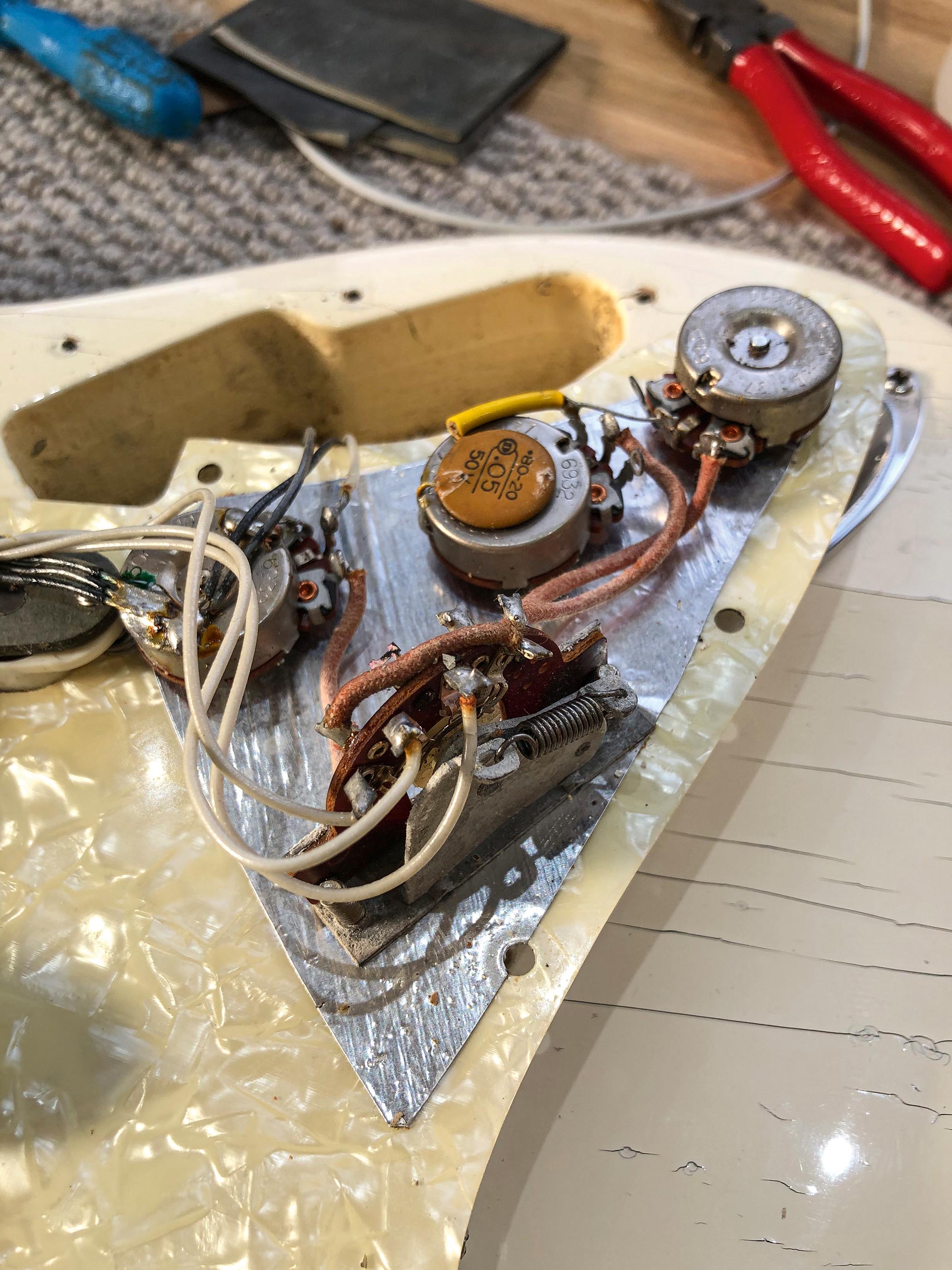
Strat control wiring continued unaltered, but the tone capacitor value was changed from 0.1µF to 0.05µF around 1968, which brightened the sound. The aluminium shield plate that has a sonic effect similar to (but subtler than) a humbucker cover was ditched in 1968.
In late 1967, CBS standardised Telecaster control wiring to the neck/both/bridge arrangement that most players had wanted all along. It also added a 0.001µF treble bleed capacitor to the volume potentiometer.
From 1965, CTS potentiometers gradually replaced Stackpoles all across the product line, and in 1969 1mega-ohm potentiometers superseded 250ks in Telecasters.
Plastics & Hardware
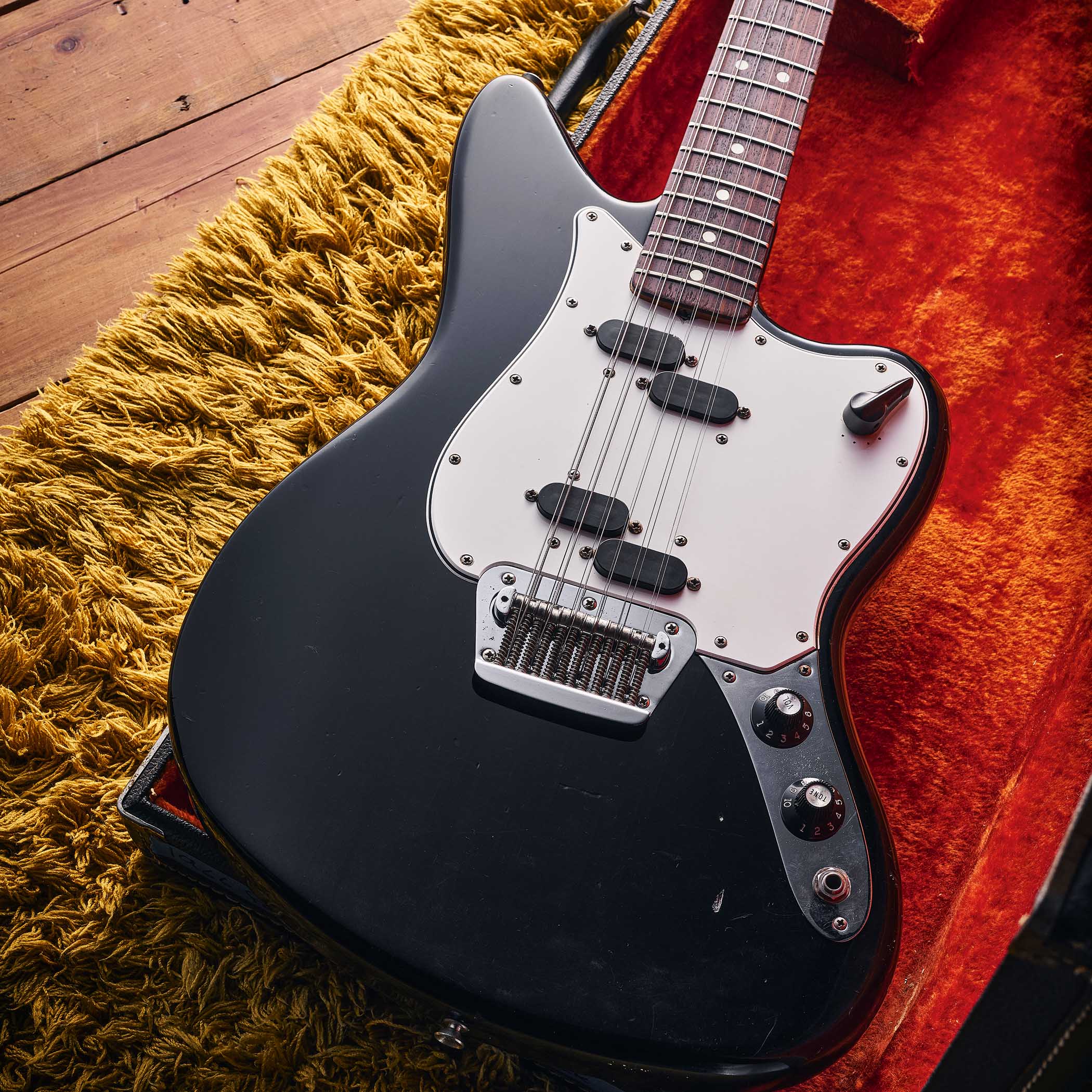
Once all of the celluloid nitrate pickguards had been used up, white/black/white PVC or ABS plastic pickguards became standard. Some Strats were fitted with four-ply tortoiseshell-fronted ’guards, and between 1968 and 1970 white Strat and Tele pickguards were pearloid on the underside.
Strat pots, switch tips and pickup covers made between ’65 and ’70 are virtually indistinguishable from those made earlier in the 1960s
Strat pots, switch tips and pickup covers made between ’65 and ’70 are virtually indistinguishable from those made earlier in the 1960s. In 1966, white witch-hat knobs appeared on Jazzmasters, and some custom-colour Jazzmasters and Jaguars got white ’guards.
Double-line Klusons replaced the earlier single-line version around 1964, but the change was entirely cosmetic. Klusons remained Fender’s standard machinehead until 1967, when tuners with ‘F’-stamped covers, octagonal buttons and vintage-style posts were introduced.
The Telecaster was the only model treated to new hardware. By 1967, smooth saddles with string grooves had replaced the threaded rod saddles; they’re non-ferric and have a slightly mellower response. Newly designed knobs with a slightly flatter top arrived around 1968.
Pickups
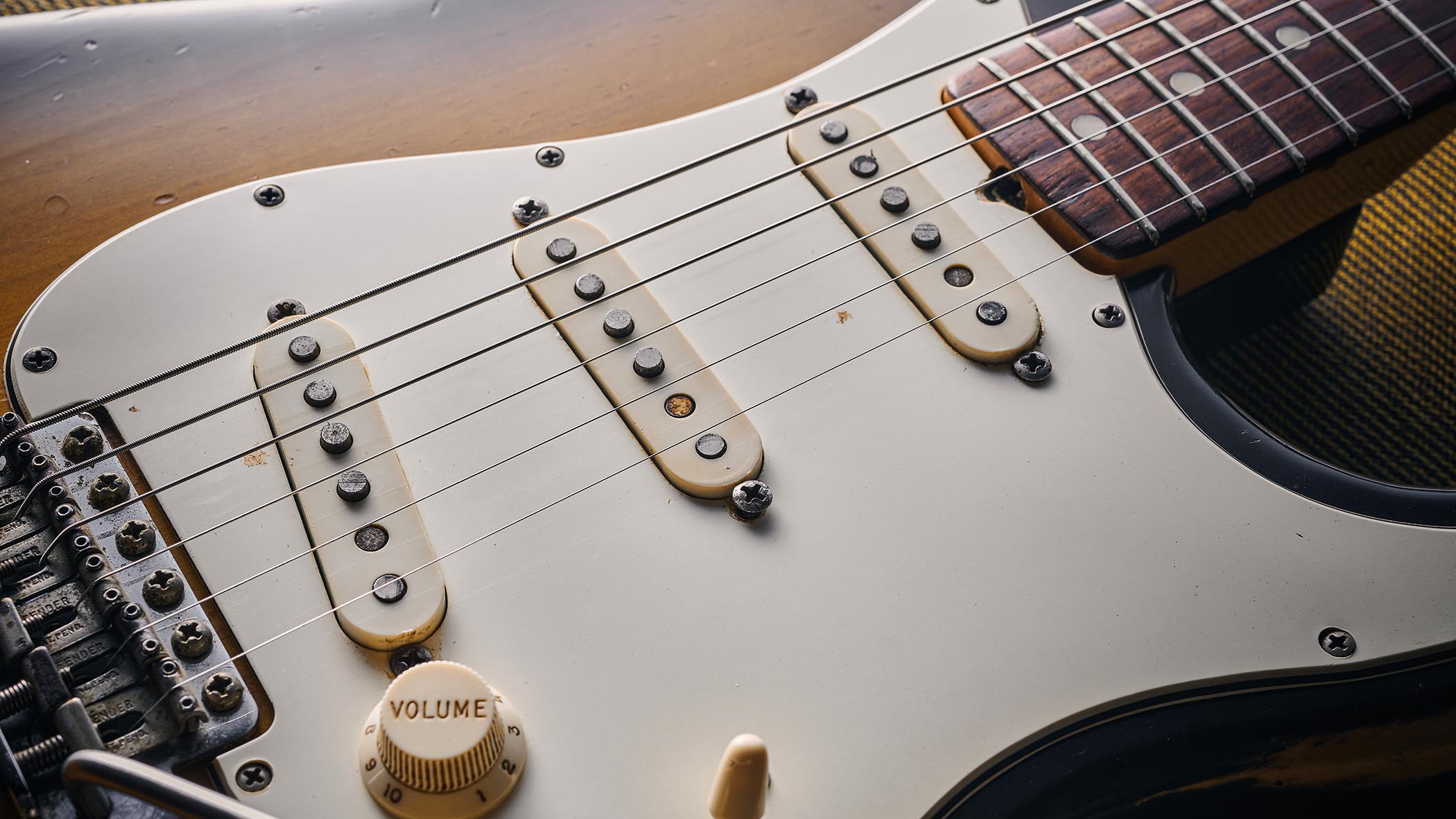
The main variables in pickup construction are the number of winds, winding method, magnet wire, potting method and magnet type. After CBS took charge, the only thing left unchanged between 1965 and 1970 was the magnets.
By the mid-1960s Fender’s standard magnet wire gauge was 42 AWG – or 43 AWG for Tele neck pickups – but for Stratocasters, the transition in the type of insulation from heavy formvar to plain enamel coincided with the switch from black to grey bottom plates in 1964.
You can tell the difference because formvar coils have a reddish-copper look, while plain enamel coils have a darker brownish-purple. Unless supply shortages obliged Fender to do otherwise, Telecaster coils were always plain enamel.
Coil-winding machines were used, but the operators guided the wire onto the bobbins by hand and deliberately randomised the coils. This is called hand- or scatter-winding and is believed to enhance treble response and clarity. Having standardised the use of plain enamel wire, CBS fully automated the winding process, thereby eliminating scatter and making coils far more even and consistent.
CBS also reduced the number of windings, which resulted in lower resistance readings. Although fewer windings tends to equate to brighter tone and lower output, the absence of scatter and the naturally full midrange characteristics of plain enamel wire balance things out to some extent. Remember, these were the pickups used by Hendrix and Gilmour.
By 1967, Strat and Tele pickups were also being lacquer potted, giving them a shriller and some might say harsher tone
Fender used formvar and plain enamel magnet wire for Jazzmaster and Jaguar pickups in the pre-CBS era. When CBS took over, the black flatwork changed to grey with dates stamped or written with pencil or black marker pen. In 1966, Fender began winding Jazzmaster coils with Polysol-insulated magnet wire and changed from wax to lacquer potting.
By 1967, Strat and Tele pickups were also being lacquer potted, giving them a shriller and some might say harsher tone. They were also more prone to microphonic squeal. The following year, plastic-insulated leadout wires replaced the cloth wires. Fender used various colours before settling on black and white.
- This article first appeared in Guitarist. Subscribe and save.
Huw started out in recording studios, working as a sound engineer and producer for David Bowie, Primal Scream, Ian Dury, Fad Gadget, My Bloody Valentine, Cardinal Black and many others. His book, Recording Guitar & Bass, was published in 2002 and a freelance career in journalism soon followed. He has written reviews, interviews, workshop and technical articles for Guitarist, Guitar Magazine, Guitar Player, Acoustic Magazine, Guitar Buyer and Music Tech. He has also contributed to several books, including The Tube Amp Book by Aspen Pittman. Huw builds and maintains guitars and amplifiers for clients, and specializes in vintage restoration. He provides consultancy services for equipment manufacturers and can, occasionally, be lured back into the studio.
You must confirm your public display name before commenting
Please logout and then login again, you will then be prompted to enter your display name.



